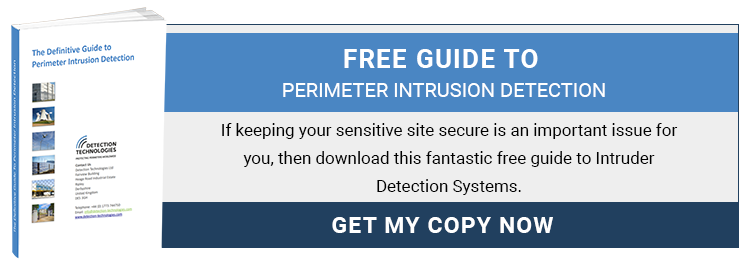 Perimeter intruder detection systems (PIDS) sound expensive, and – unless you are a prison or the military – might have a whiff of excess about them. Hollywood has a lot to answer for this, as many action movies glamorise both the exotic security and the locations that it protects, making them seem out of the reach of mortals.
Perimeter intruder detection systems (PIDS) sound expensive, and – unless you are a prison or the military – might have a whiff of excess about them. Hollywood has a lot to answer for this, as many action movies glamorise both the exotic security and the locations that it protects, making them seem out of the reach of mortals.
However, the reality is that security is a very practical and pragmatic issue, and is something that everyone has to think about on a daily basis. One of the most important considerations is whether it makes financial sense. Here’s what you need to know.
The Cost Of Theft
Commercial theft costs can be very difficult to predict. This is reflected in the current sky-high insurance premiums and reams of small print that neatly exclude many claim brackets. The theft of a laptop might equate to a few hundred pounds for the hardware, but a GDPR fine for the data stored inside it is worth either £20 million or 4 percent of your annual turnover. This can turn small assets into major liabilities.
Advanced security systems such as perimeter intrusion detection systems (PIDS) not only keep people out, they also send a very strong message to insurance companies and the authorities that security is taken seriously. The financial benefit is twofold. Firstly, the risk of theft is minimised, lowering costs and keeping the no claims bonus intact. Secondly, the enhanced security reduces the insurance premium itself.
CCTV Obsolescence
A major problem for security credibility is the fading value of CCTV. The idea behind CCTV is a solid one, but the market is flooded with so many inferior systems that criminals have learned to take the risk. A very exposed format, CCTV is also easily sabotaged and damaged by environmental interference. Crime rates have risen as CCTV trust has fallen, and this has pushed up insurance premiums. PIDS are much more discrete, whilst offering robust support to visual systems.
What this means is that just as CCTV revolutionised security in the 1970’s, PIDS is the 2020 equivalent. All insurance companies understand this, and the technological advantage is reflected in the premium.
Speaking The Language
PIDS have verifiable standards and conform to EU legislative safety requirements, so are easy language for insurance companies to understand. High-tech systems are always preferred as this significantly reduces the risk of a claim. The fact that PIDS were developed for prisons and the military means that they pack a punch when it comes to demonstrating security responsibility.
As this is a new area of technology, the experience of the manufacturer makes a big difference. A company with an established and varied portfolio in high security is a more visible asset in an organisation’s profile than a less experienced partner.
Staffing Liability
Deliberate harm to security guards is not a nice thought, but it really does happen. Security personnel are an important and expensive investment, and – if things go horribly wrong – the liability is absorbed by the insurance company. One of the benefits of a perimeter intrusion detection system is that it reduces the staff patrol requirements, and this means that in many cases the risk of personal harm can be completely eliminated.
This is happy news for insurance companies, but even happier news for those in control of the budget. Patrols take time and training, and introduce risk, so reducing their need is an important element of security protocol and budgeting.
Get In Touch
If you would like to learn more about the costs and return on investment of a perimeter intrusion detection system, please get in touch today.
Image source: Stock Unlimited






